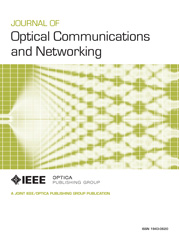

The cons of optic communication include the high cost of cable, transmitter/receiver and other support equipment, and the skill and expertise required during cable installation and interconnection. The main benefits of optical communication include high bandwidth, exceptionally low loss, great transmission range and no electromagnetic interference. 10EC81 Wireless Communication Notes 10EC82 Digital Switching Systems Notes Elective-IV (Group D) 10EC831 Distributed Systems Notes 10EC832 Network Security Notes 10EC833 - Optical Networks Notes 10EC834 High Performance Computing Networks Notes 10EC835 Internet Engineering Notes Elective-V (Group E) 10EE841 Multimedia. Optical Fiber: Consists of a core, cladding and a buffer through which the cladding guides the light along the core by using total internal reflection.The photo detector is typically a semiconductor-based photodiode. Receivers: Typically consist of a photo-detector, which converts light into electricity using the photoelectric effect.The most commonly used transmitters are semiconductor devices, such as light-emitting diodes (LEDs) and laser diodes. Transmitter: Converts and transmits an electronic signal into a light signal.Optical communication systems consist of the following components: Since the development of low-loss optical fiber cables in the 1970s, optical communications became one of the most popular methods of communication. Techopedia Explains Optical Communication If you have any problem in downloading the above material, you can comment below.Because of its numerous advantages over electrical transmission, optical fibers have largely replaced copper wire communications in core networks in the developed world. Click below link to download Optical Communication Syllabus Notes Question papers Question Banks 2 marks with answers Part B Questions with answers download.ĮC8751 Notes 1 link download - Click hereĮC8751 Notes 2 link download - Click hereĮC8751 Question Bank download - click hereĮC8751 Two Marks with Answers download - click here* System design consideration Point – to –Point link design –Link power budget –rise time budget, WDM –Passive DWDM Components-Elements of optical networks-SONET/SDH-Optical Interfaces-SONET/SDH Rings and Networks-High speed light wave Links-OADM configuration-Optical ETHERNET-Soliton.


 0 kommentar(er)
0 kommentar(er)
